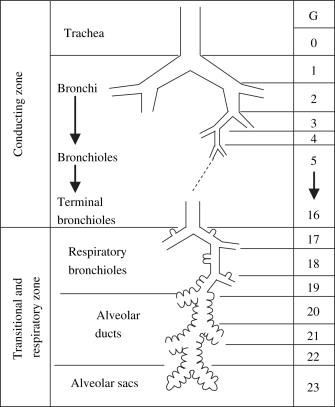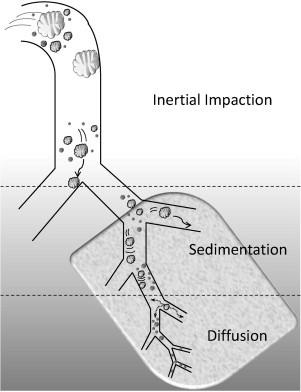
Finding 'Sanjivani', Daily! (Part-3)
Blog Space / Finding 'Sanjivani', Daily! (Part-3)

- The Motherhood Factor
- The “Higher" Connection
- Man proposes, God disposes
- From Pessimism To Optimism
- Finding 'Sanjivani', Daily! (Part-7)
- Finding 'Sanjivani', Daily! (Part-6)
- Finding 'Sanjivani', Daily! (Part-5)
- Finding 'Sanjivani', Daily! (Part-4)
- Finding 'Sanjivani', Daily! (Part-3)
- Interesting case of pneumonia
- Finding 'Sanjivani', Daily! (Part-2)
- On the moment of 100th Pulmonology Teleconsultation
- Finding 'Sanjivani', Daily
- Why so "Breathless"?
- A Blessing in Disguise
- The Art of Taking Consent
- The Oldman's Pursuit
No. This blog is not about any miracle drug or vaccine against SARS Co-V2 virus responsible for the current deadly pandemic of COVID19. This is regarding the class of medications already invented & used by millions of people across the globe daily - by force or by choice. They are inhaler medications or as commonly called "Pump".
The inhaler medications are used mainly to treat the airway disorders like Asthma, Chronic Bronchitis, Chronic Obstructive Pulmonary Disease (COPD), Bronchiolitis, Bronchiectasis and so on. The respiratory tract is divided into a conducting zone which includes – the bronchi, bronchioles, and terminal bronchioles to conduct the air breathed in that is filtered, warmed, and moistened, into the lungs (representing the 1st through the 16th generation of the respiratory tract) and a respiratory zone, which includes the respiratory bronchioles, alveolar ducts and alveoli, and is the site of oxygen and carbon dioxide exchange with the blood. The respiratory bronchioles and the alveolar ducts are responsible for 10% of the gas exchange. The alveoli are responsible for the other 90%.

To understand what edge the inhaler medications have over oral route, one needs to know what happens after swallowing the pill: The drug after through mouth, via esophagus, enters into stomach, here rate & extent of absorption is determined by solubility in the gastric juice. Propelled further in intestines, the other factors responsible for its absorption are: the intestinal metabolism, passive permeability, and transporter affinity across the intestinal membrane. Once absorbed in the blood & transported through portal vein, the drug reaches the liver & undergo first pass metabolism prior to absorption into the systemic circulation. Now the active metabolite of drug is ready to act, but wait. The target is often not located in the blood or plasma, and so the drug must distribute to the target organ, such as the lung in respiratory diseases through blood supply.
And now, let us understand what happens when the drug leaves the inhaler:
Step 1: Depending on the inhaler type, size of the particles inhaled & inspiratory effort of a person, the “Fraction" of the medication gets deposited in the lungs. A fraction of the drug remains in the device, Another fraction is deposited in mouth-throat which is swallowed and a fraction is exhaled out.
Also, there are 3 modes with which one gets the lung dose. First, through 'inertial impaction’ where the drug is deposited in central and large airways. Second, 'sedimentation by gravity' which is the most effective mechanism of drug deposition in small and peripheral airways - enhanced by breath holding and Third, ‘diffusional deposition’, by which very small particles deposit in small airways & alveoli.

Step 2: The drug deposited gets diluted in the fluids of epithelial lining. On one hand, the thickness of the fluid differs between airways and alveoli, on the other hand the solubility of drug itself effects this step.
Step 3: Clearance of the drug, predominantly by mucociliary blanket in airways and negligibly by macrophages in alveoli.
Step 4: Absorption of the drug by lung tissue.
Step 5: Retention and metabolism of the drug in lung tissue to bring out desired action.
Step 6: Drug clearance through systemic circulation, which is usually very low.
Quite clear from the above discussion that inhaler medication offers:
High pulmonary drug concentrations as the drug is directly delivered to the target organ, - the lungs. As a result, considerably lower inhaled doses required (almost 100 times less) than doses of orally administered therapy. High pulmonary yet low systemic (in other parts of body) drug concentrations conferred by inhalation lead to better effect, while simultaneously reducing the risk of side effects. In addition, inhalation can provide fast onset of effect in the lung.
As unanimously agreed, most of obstructive airway diseases are "chronic" - meaning lasting for long term & an essential component of treating them is ability to administer the molecule on long term basis. The principle is just like in people with elevated blood pressure (systemic hypertension) who require medicine for long term. Both the class : Bronchodilator and Anti-inflammatory are better only through inhaler route for long term administration.
To be continued.....

Symbolism : A Pulmonologist passes through lot of thought processes to choose an inhaler just like Hanumanji's struggle to fetch the herb. An optimized inhaler therapy reduces the symptom (particularly of breathlessness) & risk of the disease - just as sanjivani cured army to conquer the evil.
Sanjivani : a miracle herb described in the ancient scripture of "Ramayana", was obtained by Hanumanji after unprecedented struggle. Very few people know that the herb was actually "inhaled" leading to restoration of the army lead by Lord Shri Ram to conquer the evil.
Part-3 of this blog series provides insights on how inhaler medications work.
Dr. Jaykumar Mehta
MBBS (Gold Medalist)
MD, DNB, MNAMS, PD Fellow (Pulmonology)
Consultant Interventional Pulmonologist (Zydus Hospital, Ahmedabad)


